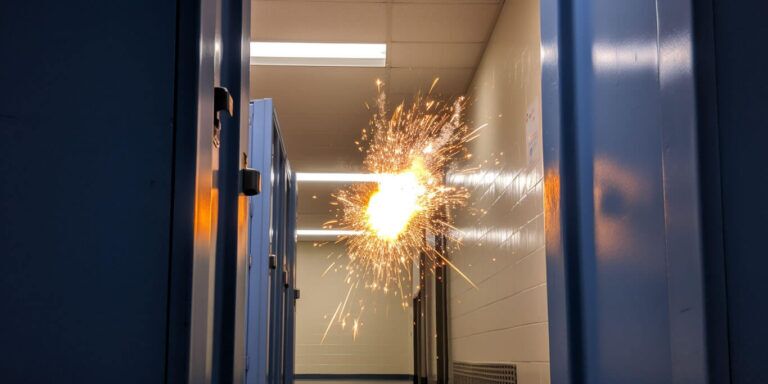A hazard is often found in the private areas of locker rooms and bathrooms at school, without making a sound. Teen vaping has gone beyond an issue of discipline; it’s now a public health problem that’s difficult to detect and harder to stop and nearly impossible to control by traditional methods. The new generation of Triton Vape Detectors are here to help. They’re not here to punish but to protect.
The Unseen Problem Growing in Plain Sight
Vaping has been sneaking into schools for years. Students can smoke without being recognized by sleek devices that resemble pens or USBs. What’s worse, it’s not just nicotine any longer. THC vaping and various other substances are now part of the equation, transforming an ordinary bathroom break into potentially a health hazard.

Image credit: tritonsensors.com
Schools have tried monitors in hallways, greater surveillance, and even closing the bathroom door. However, these strategies only go so far. Not only is it crucial to stop someone from engaging in the act however, you must also to be aware of when and where they are doing it. A vape smoke alarm is specifically designed to catch this.
How smart vape Detectors Work
Contrary to smoke alarms of the past, modern vape detectors for schools are constructed with sensors specifically designed for schools that distinguish between vape aerosols, cigarette smoke, and even marijuana vapors. They operate quietly in the background and are constantly looking at the air to detect chemicals like nicotine and THC. When vaping is detected the alerts are sent out to school personnel via text message, email, or an app, allowing an immediate and discreet response.
These days, the systems are much more sophisticated. Modern models can also track the quality of air, spot loitering, and measure the rate of occupancy. Some models even have gunshot or aggression detection, making them full-spectrum safety tools.
Privacy, Not Policing
One of the most important aspects of Triton vape detector in schools is its ability to keep students safe without crossing the line into surveillance. These detectors do not record video or audio. There aren’t hidden cameras or microphones. Instead they use data on air composition and movement analytics, ensuring that students’ privacy is protected. It’s not just efficient, but also ethically sound, which makes it a very important factor for parents, teachers and administrators.
Why schools are seeing results
This technology isn’t only effective for detecting, but it also has the potential to transform. Schools that implement these systems usually see an increase in vaping incidents in the initial month. Students who are aware that vaping in isolated areas can be observed in real-time start to question their.
However, the benefits aren’t restricted to this. Schools can get a clear picture by using trend reports and heatmaps. They will know which areas and times are the most frequent. This allows for smarter resource allocation and more meaningful interventions. Instead of reacting after an issue is already ablaze and threatening, teachers have the capacity to act when there’s time.
A Long-Term Investment in Student Wellbeing
Triton Vape Detectors aren’t installed in schools to catch students, but to guard them. It’s all about creating a safer atmosphere, where air is healthier, students are rewarded early for their behaviour, and they feel safe. These detectors are much more than devices. They mark a shift in how we look at security in schools, one that places education over punishment and prevention before reaction.
In a world in which the risks students face are often invisible, it’s time schools embraced tools designed to ensure that the invisible is seen and create every hallway and bathroom a space where health, dignity and safety are top priorities.